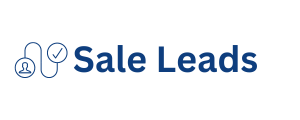False advertising has become a serious problem for the online advertising industry. Ads that mislead consumers in one way or another circulate on the net without much problem and they do so not only through pages of dubious quality but also through spaces that should be safe. The Hong-Kong Mobile Database advertising networks of Google and Facebook have too many false ads and are doing too little to kill them, a British study just pointed out. Fraudulent ads have a constant presence on their ad networks and, according to a study by consumer group Which ?, the two giants are not being effective in stopping them, even when consumers alert them to their existence.
This is a problem, since many of these ads have an impact on the reputation of real brands (one of the models of fraudulent advertising is the one that uses the reputation and corporate image of a popular brand to sell fake products) but also on digital advertising in a generalized way. It makes consumers lose confidence in this content and are much more skeptical when it comes to processing advertising, however legitimate and real it may be. In addition, the slowness of the big players in the advertising market to attack the problem is also problematic for another reason. Consumers have been locked in their homes for the past year and have spent much more time online, causing ad fraud to skyrocket.
Different studies have pointed out that fraud increased and that the economic impact it has had has been greater than expected in ‘normal’ times. It makes sense: cybercriminals often use peak moments – such as parties or sales campaigns – as a hook for their fraudulent actions. The last year has been a kind of sublimation of that idea. Returning to the data Brother Cell Phone List of the British study, one in three consumers who have seen a false advertisement and have reported it claims that this advertisement was not removed from the platform. This is what 34% of consumers who reported a fake ad on Google and 26% of those who did so on Facebook say. In general, the consumers surveyed indicate that Google is the one that manages the worst notices of false ads, although where it is more common to come across them is on Facebook. Thus, only 19% of consumers have seen a fake ad on Google compared to 27% who have seen it on Facebook.
The problem with these ads is not only that they exist, but that they are becoming more refined and effective. Cybercriminals make the browsing experience of their landing pages very similar to that of the real brand they want to impersonate or generate a feeling of security in their consumers. With this, they improve their results and achieve a higher conversion, no matter how malicious. The big question is, now, what responsibility do the advertising platform giants have in making this happen. The giants insist that such practices are prohibited and that they persecute them, but the data makes it clear that they are there and continue to reach consumers.

